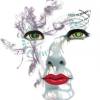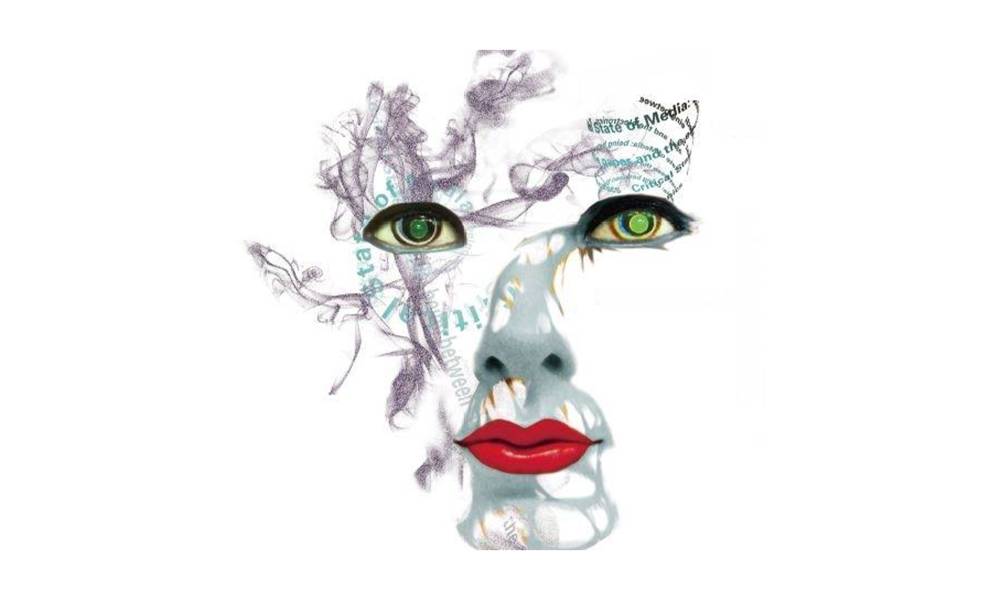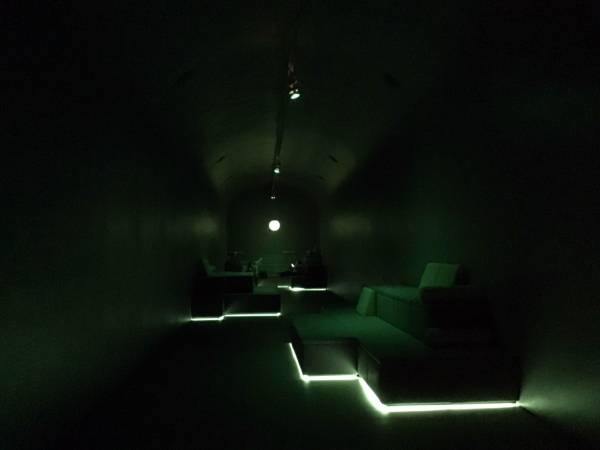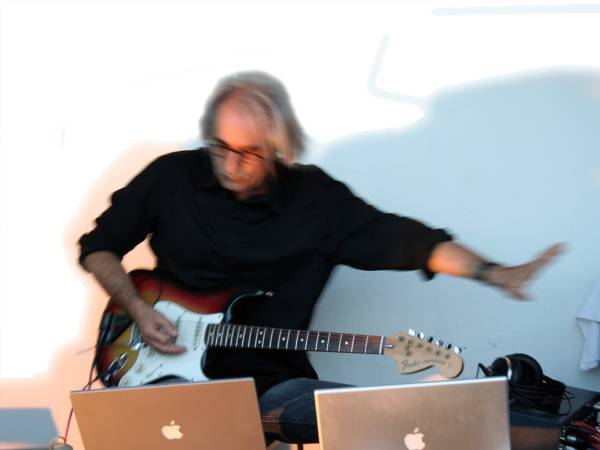7 Minuten
Microscopic change
If a change is radically new, it would be first found only at the microscopic level. In other words, change can start with such a level first. Without such a change, no change happens. Every action of ours is transmission. This means that even our body's subtle action changes something and transcends itself. Waving your hand generates a different electromagnetic field and interferes with the status quo. This is the micrological level of matter. Radio is only a visible or audible example of such a transmission.
Radio is radiation
My intuition that radio is initially radiation rather than medium became an urgent agenda as internet radio became more popular and interdependently, and the remote culture was rising high. Radio had to be redefined by itself.
When radio is considered as radiation, the conceptual range of radio extends infinitely. Radiation exists not only in the transmitter-receiver but also in the "natural" phenomenon beyond human beings. Every field and space could be understood from the perspective of the electromagnetic field which is not only monopolized by physics such as Super String Theory but also should be approached by philosophy and arts.
Radio is generally considered to carry information from one place to another. Radio broadcasting and wireless surveilling can work only within the "meaningful" context. But radiation cannot end up such an "amicable" coupling of the content and the form but oscillates between coupling and decoupling. Our body would be amid such an oscillation. In a sense, you could say that the ultimate radio would be our body.
Phenomenology of the airwaves
I spent quite many years in boring departments of philosophy, but the only one thing I learned was that phenomenology is not an academic scholarship but a guideline for practice to reveal things "To the Things Themselves“ (Zur Sache Selbst). Martin Heidegger rewrote Husserl's slogan of his phenomenology more sharply that phenomenology is "to let what shows itself be seen from itself, just as it shows itself from itself" ("Das was sich zeigt, so wie es sich von ihm selbst her zeigt, von ihm selbst her sehen lassen"). But they did such a practice at the conceptual level of language.
How about the airwaves by phenomenology? Airwaves could provide a more cosmic field of our action.
Horizon
Also, I would like to bring on the concept of "horizon" because it can explain that our perception depends on anticipation (referring to Kantian-Husserlian "Antizipation") with the horizons. Just as we don't think that at the far end of the sea horizon, we don't think nothing exists, we always perceive or feel something beyond our perception.
According to the banal knowledge, the "hearing range" of the audio frequency of human beings is between 20 to 20000 Hz at best. This myth neglects the fact that our perception has numerous layers of frequency horizons. We always hear multiple harmonics over 20000 Hz and below 20 Hz. Moreover, we don't hear only by ears but also by our skins, flesh, and bones.
Our perception always precedes over the vibrating/oscillating horizons. Audible frequency has an infinite multitude of harmonic resonance toward visual lights and thinkable ideas. So, it is difficult to draw a line between sound art and radioart.
Rethinking sound as radiation, you understand that signals on the eardrum and retina are only part of the sound-radiation. The point is not whether audible/visible or not but is to reveal various horizons that our "ordinal" perception and preposition hide. My radioart operation is to shift such horizons as "polymorphous" as possible. (see Polymorphous Space)
Sound as radiation
Even if you make a single (audible) sound, it makes radio waves through the harmonics too. Usually, airwaves are considered imperceptible without the technologically proper receiver. We approach the airwaves through a radio receiver that converts and modulates them into audible/visible signals. But we are fully aware of various symptoms deriving from electromagnetic devices of mind-control, medical equipment, and "electromagnetic pollution". Our body doesn't act like a nut-and-bolt relationship. It is always horizon-ridden to/with the outer objects. This means that even "direct" perceptible sound can work with some modulation. Direct perception is only a myth.
Hearing is not only receiving.
Given this horizon-ridden function, we can no longer cling to the set concept of "receiver" and "sender". Hearing is not only receiving. While hearing, we transmit something toward the sounding objects. To perceive, we have to transmit something. Every act of ours has various horizons and we act by stepping across such horizons.
Human beings have a certain range of audio, visual, touching, and smelling frequencies. Even thinking has a range of horizons of logic and language. If the audible frequency for a typical young person is 20 to 20000Hz and the visible frequency is 430 to 770 THz, what is the frequency spectrum of thinking? I think you could calculate it by the frequency range of neurotransmitters. Presumably, it would be much higher than the visible light.
Politics of broadcasting
My earlier interest in the free radio and the community radio was message-oriented. But it changed when we re-defined our free radio to Mini-FM which neglected the difference of sender/receiver and therefore the studio became a meeting-performance-working space and even an accommodation.
The video features "Saturday Night Virus", a monthly program on the free radio station Radio Home Run Shimokitazawa, Tokyo in 1987.
On November 4, 1991, DeeDee Halleck and Paper Tiger Television hosted a party and invited me to teach how to build a transmitter at the Paper Tiger Studio on Lafayette Street in New York City. This was broadcast on the public access channel.
So, it was a natural process that our radio functioned as a therapeutic place, artistic workshop, and "radioparty."
In terms of politics, the members of our radio consisted of the post-new-left generation, so we minded very much how and where we did, and we preferred "minor" ways. Félix Guattari's notion of "Micropolitics" and "Molecular revolution" reminded us that politics exists even in the subtle aspects of how-to-transmit, where-to-transmit, and even how to handle your microphone. So, our Mini-FM initially started with the radio with "radical contents" but gradually moved toradio without contents.
We believed that this was not backward from the real and militant politics but was more involved in the deeper level of the reality.
As the internet emerged as a popular tool, it pushed our notion that airwaves radio had not to play the role of message deliverer anymore. As streaming technology became popular, the internet had an easier advantage to deliver messages than the airwaves radio. For us, to keep the form of airwaves radio became a challenge. While keeping a message-oriented radio using the streaming format Radio Home Run in the Net, I myself have been more involved in radio transmission without content.
That's what I call radioart in English without space between "radio" and "art".
Age of digitization
Our ultimate question is where we can find our expression amid digitization. There are so many tools to do so. But every expression by us might become merely a shallow modification of ready-made tools. Technologically and politico-economically, we are close to an end where our body is useless, and our idiosyncratic creativity and originality become a joke.
If we can be in complete amnesia and forget our bodies, it would be the easiest. But we cannot imagine the bodiless and memoryless situation as long we are thinking and feeling with our bodies.
I once argued that hands are the last island of our body. While various automatic system from voice control to telepathic control is increasingly advancing, our hands and fingers must make the final decision. A series of my hand-weaving method of radioart derived from this concept.
As an option, our hands could remain the last island of tacky redundancy and contingency of our body. As another option, however, our hands and fingers might become useless after some automatic and self-oscillating system of virtual flesh and brain just like movie examples of "psychokinesis." A brain-computer interface already exists, and the project is going on. But the birth of such a machine starts with our hands using computers so far.
Epoché
In this transition, we can have a strategy. It's called "bracketing" (epoché) which was initially popular in phenomenology. It's not a pretentious ignorance but the more radical activity to artificially intensify the ongoing tendency. Let's try to intensify the boundlessness and recursion. Simplistically, we try to become an "android" by bracketing our already cyborglike body and trying to act as a primitive android not pretending it. When it happens, however, we will understand that it will not be the end of our body but the beginning of our new body, a more microscopic body.
In every art today, removing our body-flesh element is trendy. Why not? Given that we still cannot get out of the optimistic or dystopian relationship with our body, try to bracket presumably all elements of our body. Have you become a humanoid robot perfectly? Will an ultra-AI terminate thinking, creating, and performing? Will the unemployed body think and do anything different over the virtual system? At the extreme, is do-nothing Nothing? This Nothing might be a new body.
Article topics
Article translations are machine translated and proofread.
Artikel von Tetsuo Kogawa
 Tetsuo Kogawa
Tetsuo Kogawa 



